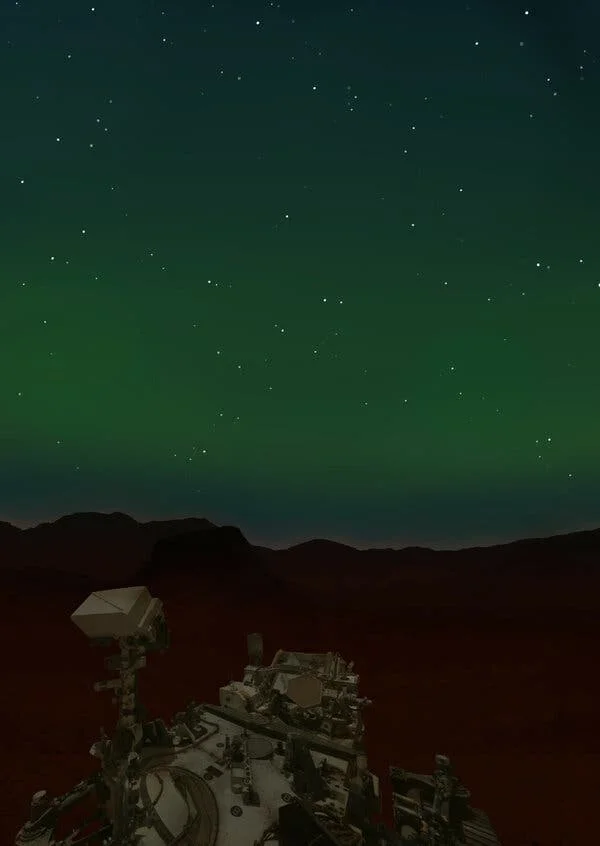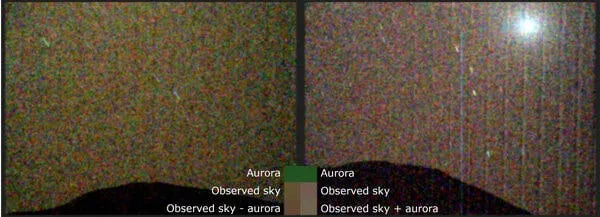
NASA’s Perseverance Rover Captures First Visible Aurora on Mars: A ‘Green Sky’ Revelation
Mankind's understanding of the cosmos took a giant leap recently as NASA's Perseverance rover captured the first-ever visible aurora on Mars. This groundbreaking observation, akin to Earth's northern lights, marks a pivotal moment in planetary science, offering unprecedented insights into the Martian atmosphere and the effects of space weather. Prior to this, auroras had only been observed by orbiting spacecraft in ultraviolet wavelengths, invisible to the naked eye.
The captivating discovery, led by Dr. Elise Wright Knutsen from the University of Oslo, was detailed in a study published in Science Advances. It all began with a forecast of a violent solar outburst on March 15, 2024, predicted to collide with Mars a few days later. Acting on this intelligence, the Perseverance rover was strategically positioned to gaze upwards at the precise moment, capturing a breathtaking explosion of green speckles in the Martian sky.

Describing the moment, Dr. Knutsen recounted, "I cried a little bit." For her, it was a deeply personal and professional triumph, made even more special as it coincided with her birthday. "It was on my birthday of all things," she added, "It was a great day."
The green aurora, resulting from energized atomic oxygen, painted a surreal vista against the backdrop of ocher Martian mountains. While the rover's cameras are not optimized for nighttime shots, the image provides the first documentation of a Martian aurora visible to the human eye, sparking the imagination about the Martian aurora.
The discovery doesn't just offer a visual spectacle. The ability to observe auroras on Mars unlocks a new dimension in studying the planet's atmosphere and its interaction with solar events. Auroras act as visible manifestations of how the sun affects planetary atmospheres, allowing scientists to probe the transfer and injection of particles in a very direct way.
Unlike Earth, Mars lacks a global magnetic field, relying on localized patches. This difference contributes to the unique aurora phenomena observed on Mars, including ribbon-like structures near strong magnetic field regions (discrete auroras) and planet-spanning diffuse auroras. The recent observation captured both visible and global aurora.
NASA's forecasting models proved critical, providing a few days' notice before the solar storm hit Mars, enabling the Perseverance team to meticulously plan their commands to the rover. Despite challenges, including limited rover time and previous unsuccessful attempts, the team's persistence and the aligned celestial events culminated in this phenomenal achievement.
Scientist Tim McConnochie excitedly shared the data with Dr. Knutsen after receiving it by simply sending the file with no further comments. Dr. Knutsen said "For most people looking at atmospheric spectra, it’s like a wiggly line. … Most people don’t get excited by that,” said Knutsen. “But I saw that spectrum, and I was moved to tears.”, emphasizing the profound impact of witnessing the aurora.
This Martian aurora opens exciting possibilities for future study, from tracking the evolution of solar storms to understanding the Martian atmosphere's chemistry. As John Clarke, astronomer and professor emeritus at Boston University, noted, the rover can help study changes in auroral brightness and links to the solar storms. Future Martian tourist brochures might just feature the aurora borealis.
What does this discovery mean for future manned missions to Mars? How will our understanding of space weather on Mars evolve with this new observational capability? Share your thoughts and predictions in the comments below.